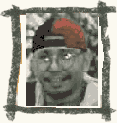 What is sports massage therapy?
What is sports massage therapy?Sports massage therapy is massage therapy given to active people, usually those involved in sports on a regular basis, as a part of their conditioning program. Often, sports massage is performed on athletes before, during and after their athletic event.
What are the benefits of sports massage therapy?

Sports massage therapy offers many benefits to its patients. Often, sports massage therapy will become a regular part of an athlete’s conditioning program, right alongside exercise and sport practice. It has just recently become an integral part of athletes’ training program, and is now widely used and widely supported.
 Since almost everything an athlete does is to condition their body (this may be in the form of workouts, weightlifting, drills, and more) it only makes sense that an important part of keeping the body in good condition would be to receive a relaxing and tension-relieving massage. When an athlete is given sports massage therapy on a regular basis—especially when it is given before, during and after an athletic event—it can provide a number of benefits, including: • Prevention of injuries
Since almost everything an athlete does is to condition their body (this may be in the form of workouts, weightlifting, drills, and more) it only makes sense that an important part of keeping the body in good condition would be to receive a relaxing and tension-relieving massage. When an athlete is given sports massage therapy on a regular basis—especially when it is given before, during and after an athletic event—it can provide a number of benefits, including: • Prevention of injuries• Reduction in pain
• Reduction in swelling

• Increased flexibility/Decreased tension
• Enhanced performance
In addition to the many benefits of sports massage therapy listed above, it also has an added purpose: it can help an athlete heal more quickly from a
sports injury. By receiving sports massage therapy, an athlete can recover more quickly and usually experience much less pain than if they did not receive the therapy.
• Enhanced performance
In addition to the many benefits of sports massage therapy listed above, it also has an added purpose: it can help an athlete heal more quickly from a
sports injury. By receiving sports massage therapy, an athlete can recover more quickly and usually experience much less pain than if they did not receive the therapy.
In addition to the many benefits of sports massage therapy listed above, it also has an added purpose: it can help an athlete heal more quickly from a sports injury. By receiving sports massage therapy, an athlete can recover more quickly and usually experience much less pain than if they did not receive the therapy.
What does sports massage therapy consist of?
Sports massage therapy is a combination of different types of massage therapies and techniques. The type of techniques that will be used in an athlete’s sports massage will depend on the needs of that athlete at that time. Many times, sports massage therapy will include techniques from both Shiatsu and Swedish massage. The sports massage could include many other techniques from many other forms of bodywork as well. The needs of a particular athlete are important (such as an injury), but another important deciding factor in the type of sports massage therapy an athlete will receive is the sport that an athlete plays.
Each type of sport (and each position in a sport) will demand something different from the players’ bodies than other sports. This means that the kind of sports massage therapy that a player will receive is greatly affected by the type of sport (and the position) that they play.









 Trigger Point Therapy
Trigger Point Therapy 
 Deep Tissue Massage
Deep Tissue Massage Sports Massage
Sports Massage Reflexology
Reflexology Cranial Sacral Therapy
Cranial Sacral Therapy




















